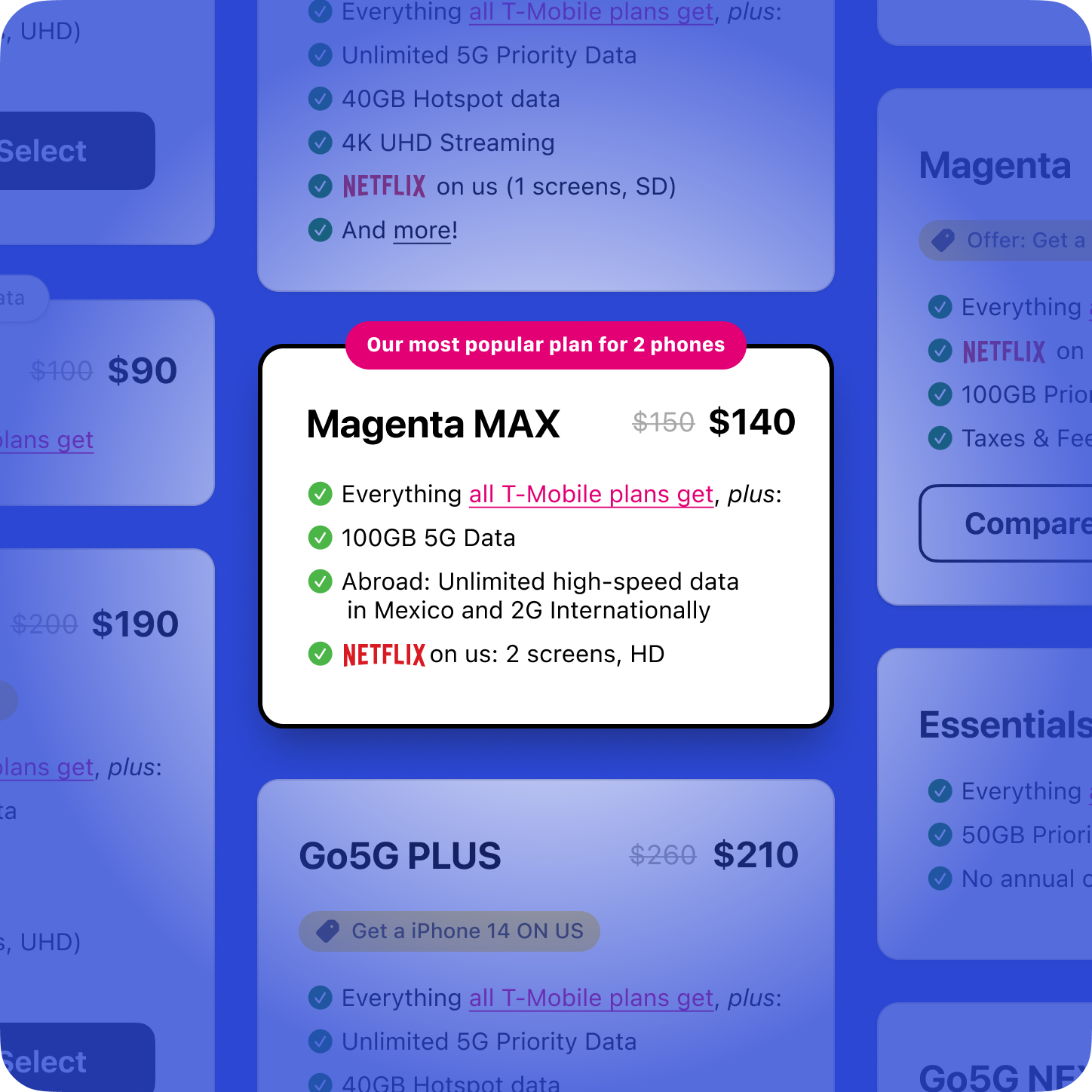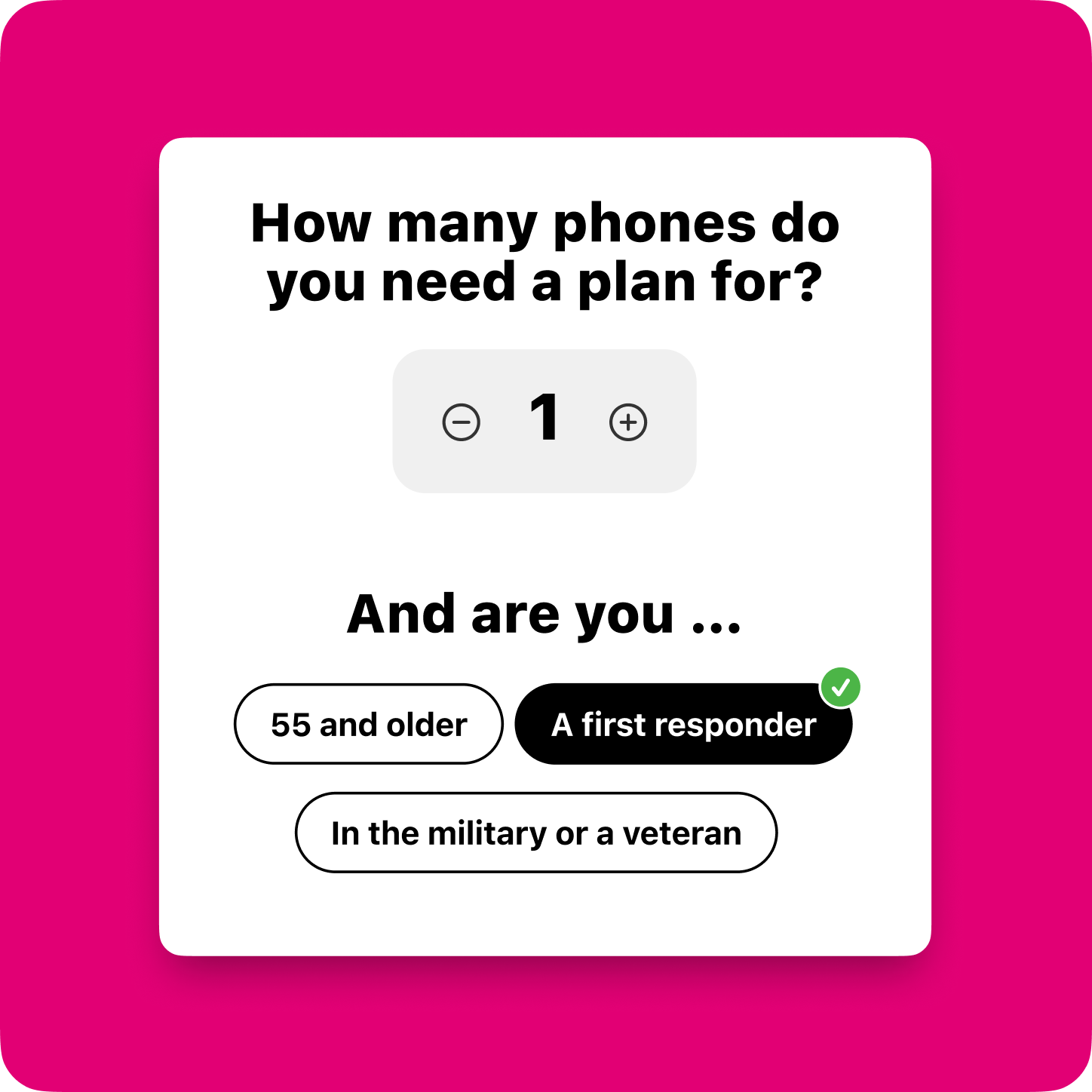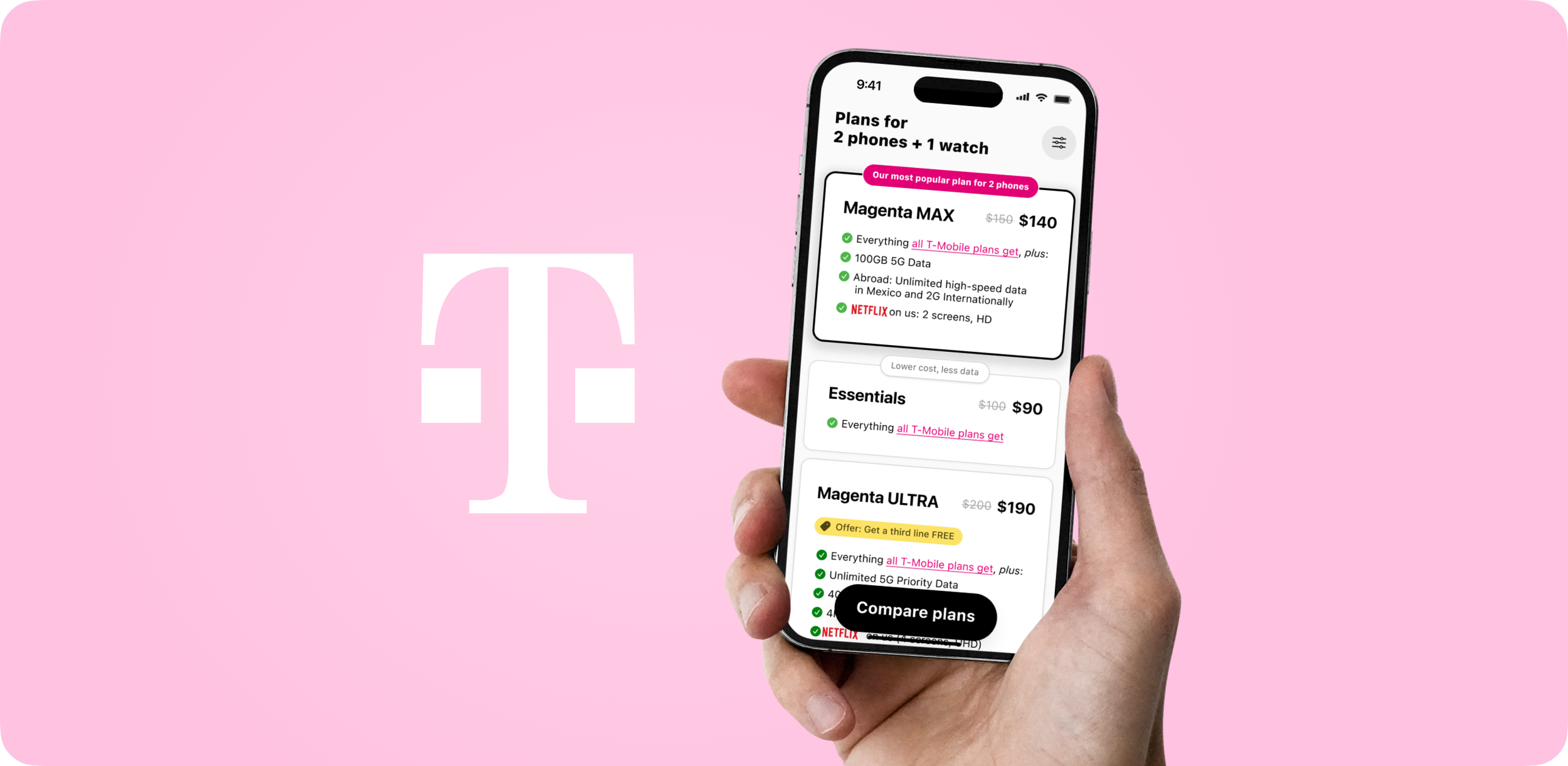Creating T-Mobile’s new Cell Phone Plan Shopping Experience
I designed a cell phone plan shopping experience that brought shoppers tailored information and tools to make more informed confident decisions, which led to increase of orders by 174% and cart value by 5%.
Customer Objective: Get a better deal than I have today—save money and get some more perks. I want to feel taken care of.
Business Objective: Offer new plan types to shoppers without negative impact to conversion.
Challenge
Offer new and different plans, without any impact to performance
T-Mobile wanted to introduce additional plan types to shoppers, but the existing architecture and experience was static and rigid: three plans only, in a table view, hard coded. No personalization, contextualization, sorting, or modularity.
Discovery & Exploration
By poring over past research, market research, shopping psychology, and performing like-offering benchmarking (same industry, risk profile, customer profile), I was able to build a model of the shopper’s journey, identifying opportunities and creating hypotheses for what the future experience would need in order to be successful.
Ideation
Based on what I learned in the discovery phase, I developed multiple concepts of plan display, personalization, contextualization, information design, and flow through a codesign process with Product and Engineering leads, which I prototyped and commissioned concept testing of to get early directional input. As I received user and engineering feedback, we adjusted our priorities as needed, and I refined and iterated the experience to an experience that got the most important things for the shopper and was implementable.
Principles-first
Defining core principles of the experience—drawn from customer needs and wants found in the discovery phase—I used this as an alignment and prioritization tool throughout the design phase, streamlining feature and feasibility discussions, ultimately allowing us to get more for the shopper, faster.
Result
Shoppers report higher confidence and ease in choosing a plan (and we measure closer alignment of perceived-to-actual understanding, so confidence is well-placed).
Upon the launch of the new plan shopping experience, average daily orders from the page increased 174%, take rate of preferred plans increased 5%, and customer cart size increased 5%.
Conclusion
I planned and led the execution of the end-to-end plan shopping journey from inciting action through to order completion, leveraging concept and usability testing to inform and make adjustments to ensure a successful launch.










